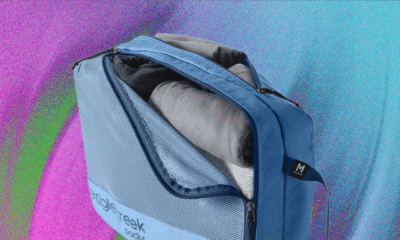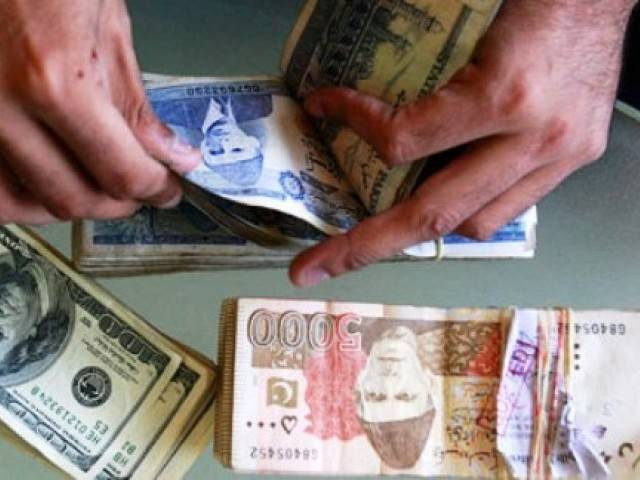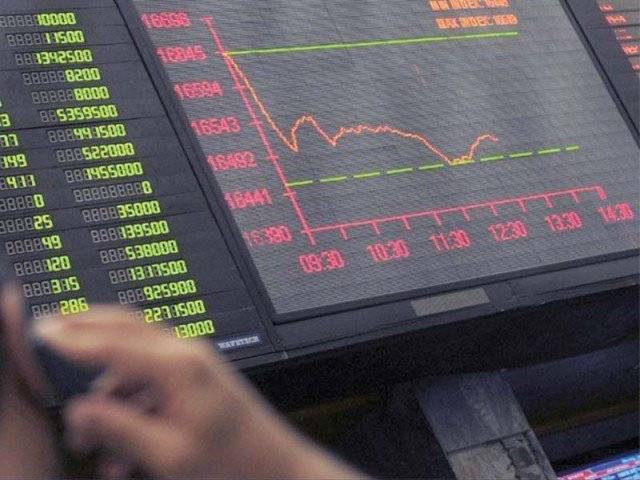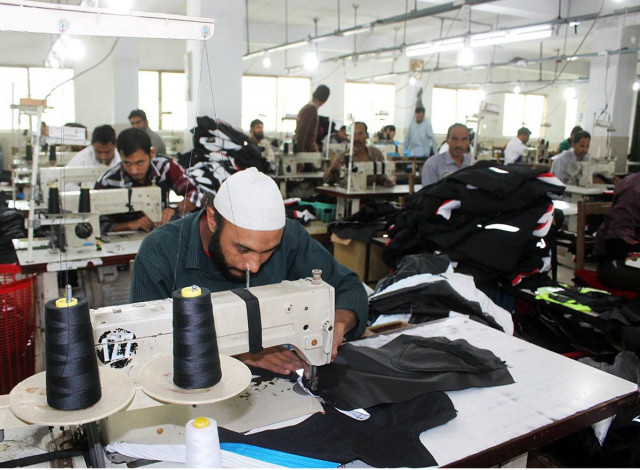Business
Abercrombie sales growth slows again, but Hollister surges 19%

Abercrombie & Fitch sales growth slowed again in its fiscal second quarter as the apparel company struggles to top the surge it enjoyed last fiscal year.
During the quarter, sales at the namesake Abercrombie brand fell 5% while comparable sales dropped 11%.
But the success of teen-focused Hollister brand helped to salvage the quarter. Overall, Abercrombie & Fitch sales climbed 7%, led by 19% growth at Hollister – the brand’s best-ever second-quarter net sales growth, the company said. Comparable sales across the business rose 3%, led by Hollister, which also saw comparable sales grow 19%.
Abercrombie narrowly beat Wall Street expectations on the top and bottom lines. The company also hiked its full-year revenue outlook and now expects sales to climb 5% to 7%, compared with previous guidance of 3% to 6% growth. Much of that range would top Wall Street expectations of 5.2% growth, according to LSEG.
Shares fell nearly 4% in premarket trading.
Here’s how the company did in its second fiscal quarter compared with what Wall Street was anticipating, based on a survey of analysts by LSEG:
- Earnings per share: $2.32 adjusted vs. $2.30 expected
- Revenue: $1.21 billion vs. $1.20 billion expected
The company’s reported net income for the three-month period that ended August 2 was $141 million, or $2.91 per share, compared with $133 million, or $2.50 a share, a year earlier. Excluding the impact of a favorable litigation settlement, Abercrombie saw earnings of $2.32 per share.
Sales rose to $1.21 billion, up about 7% from $1.13 billion a year earlier.
“We entered the second half of 2025 on offense,” CEO Fran Horowitz said in a news release. “We are increasing our full year net sales outlook, reflecting our strong positioning and growth trajectory, building on record 2024 results. Our team remains focused on delivering for our customers while investing to capitalize on the significant, long-term opportunities for our global brands.”
For its current quarter, Abercrombie’s also gave a better-than-expected sales outlook. It anticipates revenue will rise between 5% and 7%, beating expectations of 4.3% growth, according to LSEG.
Meanwhile, its profit outlook for the fiscal third quarter is weaker than expected. The company anticipates earnings per share will be between $2.05 and $2.25, far below expectations of $2.53, according to LSEG.
For the full year, Abercrombie tightened its earnings outlook and now expects earnings per share to be between $10.00 and $10.50, about in line with expectations of $10.15, according to LSEG.
Abercrombie’s guidance incorporates about $90 million in net tariff costs – nearly double what it previously anticipated. When it announced fiscal first quarter earnings in May, Abercrombie said it was expecting a $70 million hit from tariffs that it could reduce to $50 million through mitigation.
At the time, President Donald Trump’s so-called reciprocal tariffs were held at 10% across most of the globe. But now Abercrombie faces higher duties on goods from Vietnam, Cambodia and India, key manufacturing regions for the company.
At the time, the company said it wasn’t planning broad price increases as part of its mitigation efforts. It’s unclear if Abercrombie will change that stance now that tariffs have increased across Asia.
Abercrombie & Fitch, once a forgotten mall brand, has been on a rocket ship of growth over the last few years. But the surge has started to slow at its namesake banner.
The company has turned to new categories, such as dresses, athleisure and bridal, to stimulate growth. It’s also working to expand internationally and lean on partnerships.
On Monday, the company announced it would be the NFL’s first “official fashion partner” – a multiyear deal that will include personal styling for athletes, athlete-led campaigns and player-designed apparel. The partnership comes after Abercrombie launched an assortment of NFL licensed products in 2022, a category that has performed well for the company.
It has teamed up with star players like Christian McCaffrey, Tee Higgins and CeeDee Lamb to advertise the partnership and designed limited-edition co-designed apparel that will be available for sale during the upcoming season.
The partnership reflects the steps retailers are taking to ensure they can continue to grow sales and stay relevant with consumers at a time when shoppers are pulling back on nice-to-have items like new clothes and accessories. Competitors like Levi, American Eagle and Gap have teamed up with celebrities in recent marketing campaigns ahead of the back to school and fall shopping seasons.
Internationally, Abercrombie’s efforts to expand are paying off in some parts of the world. During the quarter, sales in its Asia Pacific region grew 12%, while comparable sales climbed 3%. That was offset by a slowdown in Europe, the Middle East and Africa, where sales slid 1% and comparable sales were down 5%.
Business
Trade talks: India, EU wrap up 14th round of FTA negotiations; push on to seal deal by December – The Times of India

India and the 27-nation European Union (EU) have concluded the 14th round of negotiations for a proposed free trade agreement (FTA) in Brussels, as both sides look to resolve outstanding issues and move closer to signing the deal by the end of the year, PTI reported citing an official.The five-day round, which began on October 6, focused on narrowing gaps across key areas of trade in goods and services. Indian negotiators were later joined by Commerce Secretary Rajesh Agrawal in the final days to provide additional momentum to the talks.During his visit, Agrawal held discussions with Sabine Weyand, Director General for Trade at the European Commission, as both sides worked to accelerate progress on the long-pending trade pact.Commerce and Industry Minister Piyush Goyal recently said he was hopeful that the two sides would be able to sign the agreement soon. Goyal is also expected to travel to Brussels to meet his EU counterpart Maros Sefcovic for a high-level review of the progress made so far.Both India and the EU have set an ambitious target to conclude the negotiations by December, officials familiar with the matter said, PTI reported.Negotiations for a comprehensive trade pact between India and the EU were relaunched in June 2022 after a hiatus of more than eight years. The process had been suspended in 2013 due to significant differences over market access and tariff liberalisation.The EU has sought deeper tariff cuts in sectors such as automobiles and medical devices, alongside reductions in duties on products including wine, spirits, meat, and poultry. It has also pressed for a stronger intellectual property framework as part of the agreement.For India, the proposed pact holds potential to make key export categories such as ready-made garments, pharmaceuticals, steel, petroleum products, and electrical machinery more competitive in the European market.The India-EU trade pact talks span 23 policy chapters covering areas such as trade in goods and services, investment protection, sanitary and phytosanitary standards, technical barriers to trade, rules of origin, customs procedures, competition, trade defence, government procurement, dispute resolution, geographical indications, and sustainable development.India’s bilateral trade in goods with the EU stood at $136.53 billion in 2024–25, comprising exports worth $75.85 billion and imports valued at $60.68 billion — making the bloc India’s largest trading partner for goods.The EU accounts for nearly 17 per cent of India’s total exports, while India represents around 9 per cent of the bloc’s overall exports to global markets. Bilateral trade in services between the two partners was estimated at $51.45 billion in 2023.
Business
Telcos network costs rise: Gap between expenditure and revenue exceeds Rs 10,000 crore; COAI flags rising network investment burden – The Times of India

The gap between telecom operators’ network expenditure and revenue continues to widen, prompting industry body COAI to defend calls for higher mobile tariffs, citing the increasing financial burden of network deployment on service providers.Speaking at the India Mobile Congress, Cellular Operators Association of India (COAI) Director General, SP Kochhar, told PTI that while the government has provided significant support to telecom operators through policies such as the right of way (RoW), several authorities continue to levy exorbitant charges for laying network elements.“Earlier, the gap until 2024 for infrastructure development and revenue received from tariffs was around Rs 10,000 crore. Now it has started increasing even further. Our cost of rolling out networks should be reduced by a reduction in the price of spectrum, levies etc. The Centre has come out with a very good ROW policy. It is a different matter that many people have not yet fallen in line and are still charging extremely high,” Kochhar said.He also defended the recent cut in data packs for entry-level tariff plans by select operators, stressing that the move was necessary given competitive pressures.Kochhar pointed out that competition among the four telecom operators remains intense, and there has been no significant trend suggesting that consumers are shifting towards low-cost data options.“There is a need to find ways to make high network users pay more for the data. Seventy per cent of the traffic which flows on our networks is by 4 to 5 LTGs (large traffic generators like YouTube, Netflix, Facebook etc). They pay zero. Nobody will blame OTT but they will blame the network. Our demand to the government is that they [LTGs] should contribute to the development of networks,” Kochhar said.He added that the investments made by Indian telecom operators are intended for the benefit of domestic consumers and are not meant to serve as a medium for profit for international players who do not bear any cost.
Business
Indias Real Estate Equity Inflows Jump 48 Pc In Q3 2025: Report

NEW DELHI: Equity investments in India’s real estate sector jumped 48 per cent year-on-year to $3.8 billion in the July-September period (Q3), a report said on Friday. This growth in inflow was primarily fuelled by capital deployment into land or development sites and built-up office and retail assets, according to the report by real estate consulting firm CBRE South Asia.
In the first nine months of 2025, the equity investments increased by 14 per cent on-year to $10.2 billion — from $8.9 billion in the same period last year.
The report highlighted that land or development sites and built-up office and retail assets accounted for more than 90 per cent of the total capital inflows during Q3 2025.
On the category of investors, developers remained the primary drivers of capital deployment, contributing 45 per cent of the total equity inflows, followed by Institutional investors with a 33 per cent share.
CBRE reported that Mumbai attracted the highest investments at 32 per cent, followed by Pune at around 18 per cent and Bengaluru at nearly 16 per cent.
Anshuman Magazine, Chairman and CEO – India, South-East Asia, Middle East and Africa, CBRE, said that the healthy inflow of domestic capital demonstrates the sector’s resilience and depth.
“In the upcoming quarters, greenfield developments are likely to continue witnessing a robust momentum, with a healthy spread across residential, office, mixed-use, data centres, and I&L sectors,” he added.
In addition to global institutional investors, Indian sponsors accounted for a significant part of the total inflows.
“India’s ability to combine strong domestic capital with global institutional participation will remain a key differentiator in 2026 and beyond,” added Gaurav Kumar, Managing Director, Capital Markets and Land, CBRE India.
CBRE forecasts a strong finish for the investment activity in 2025, fuelled by capital deployment into built-up office and retail assets.
For the office sector, the limited availability of investible core assets for acquisition indicate that opportunistic bets are likely to continue gaining traction, the report noted.
-

 Tech6 days ago
Tech6 days agoI’ve Tested Countless Mesh Systems. Here Are the Routers I Recommend
-

 Tech1 week ago
Tech1 week agoAmazon Prime Big Deal Days Is Next Week, but We Already Found 40 Early Deals
-

 Tech1 week ago
Tech1 week agoAll Hail the Surprisingly Versatile Packing Cube! These Are Our Favorites
-

 Tech6 days ago
Tech6 days agoJony Ive Says He Wants His OpenAI Devices to ‘Make Us Happy’
-

 Tech1 week ago
Tech1 week agoAI in an ‘industrial bubble’ but will benefit society: Bezos
-

 Tech1 week ago
Tech1 week agoAmazon is overhauling its devices to take on Apple in the AI era
-

 Business7 days ago
Business7 days agoInvestors are packing up; Pakistan must ask why | The Express Tribune
-

 Tech1 week ago
Tech1 week agoCombat Dry Indoor Winter Air With a New Humidifier











